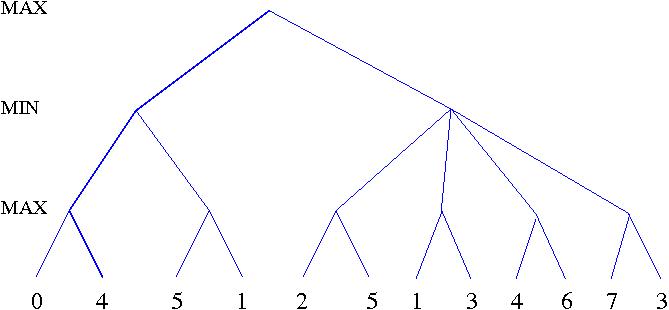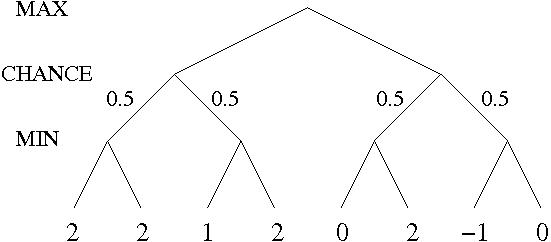
1 2 3 8 5 4 7 6
Keeping in mind that the goal state is:
1 2 3 4 5 6 7 8
Trace the A*Search algorithm using the Total Manhattan Distance heuristic, to find the shortest path from the initial state shown above, to the goal state.

- Copy the figure, mark the value of all internal nodes, and indicate the best move at the root with an arrow.
- Given the values of the first six leaves, do we need to evaluate the seventh and eighth leaf? Given the values of the first seven leaves, do we need to evaluate the eighth leaf? Explain your answers.
- Suppose the leaf node values are known to lie between -2 and 2 inclusive. After the first two leaves are evaluated, what is the value range for the left-hand chance node?
- Circle all the leaves that need to be evaluated under the assumption in Part c.